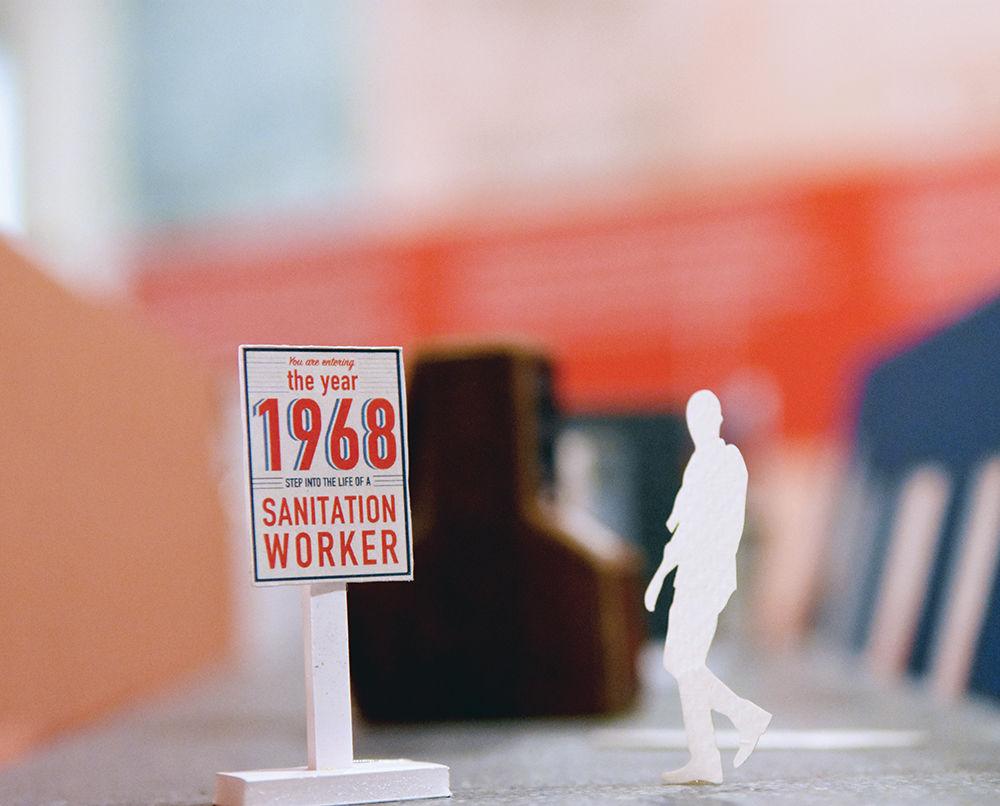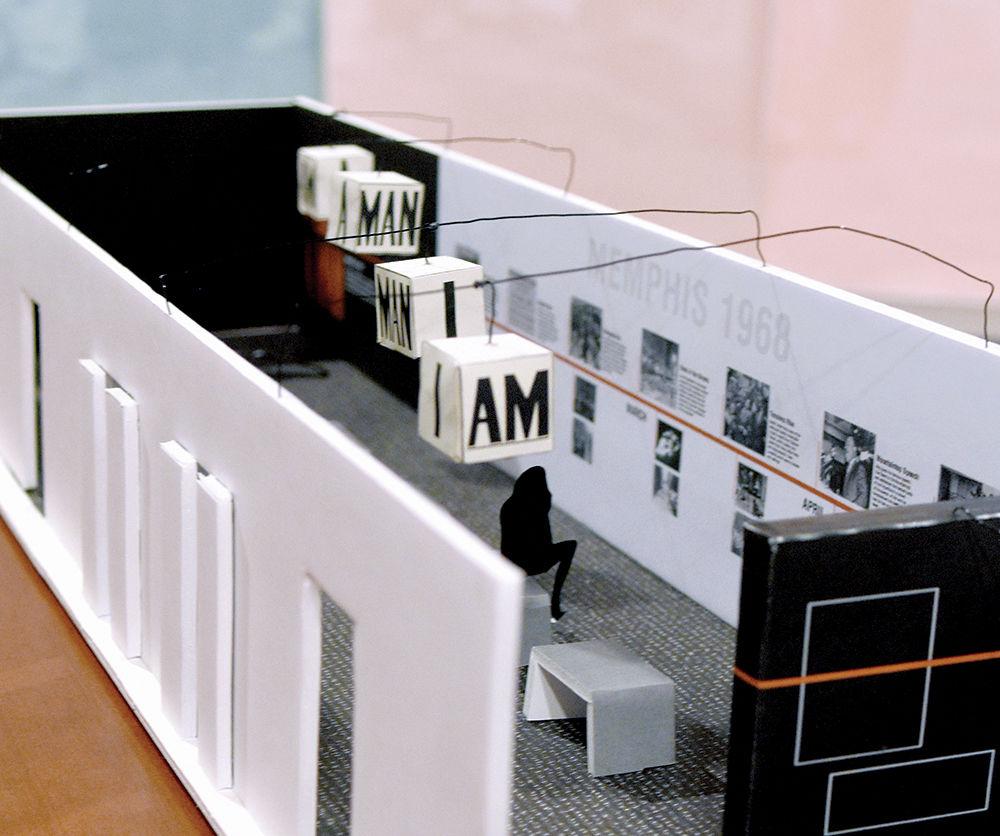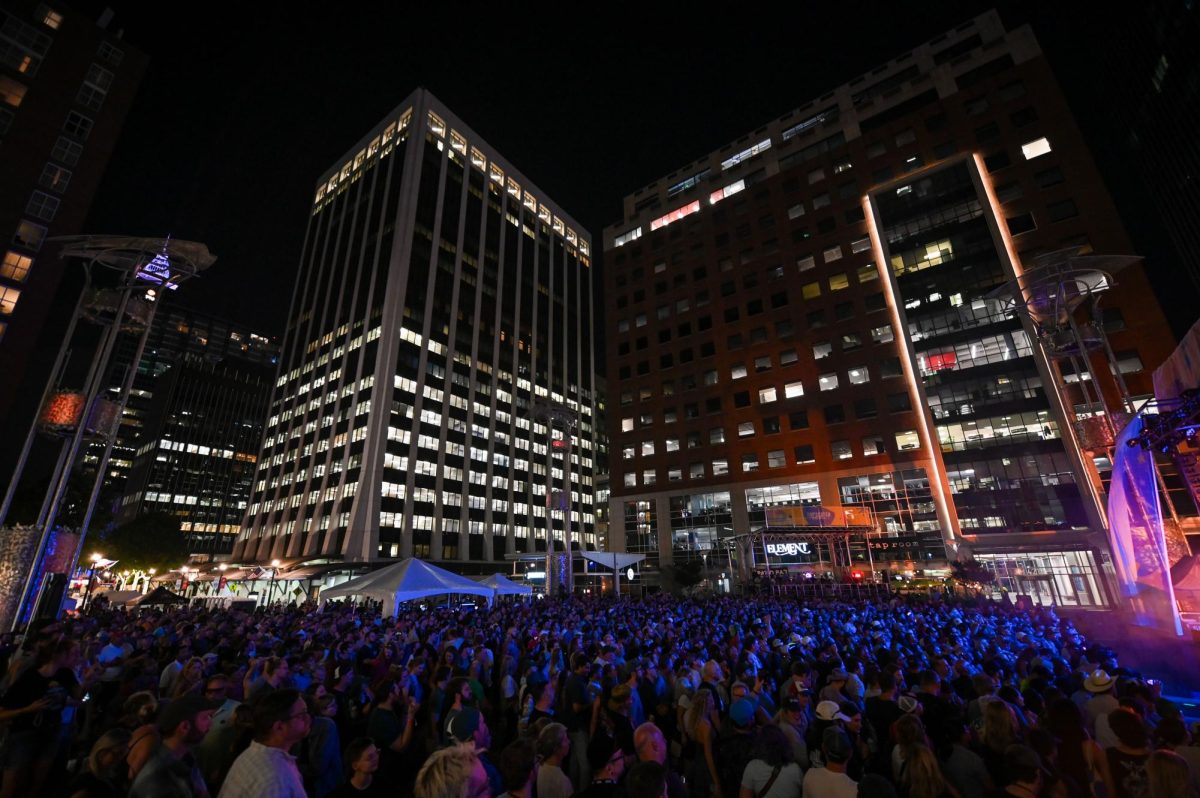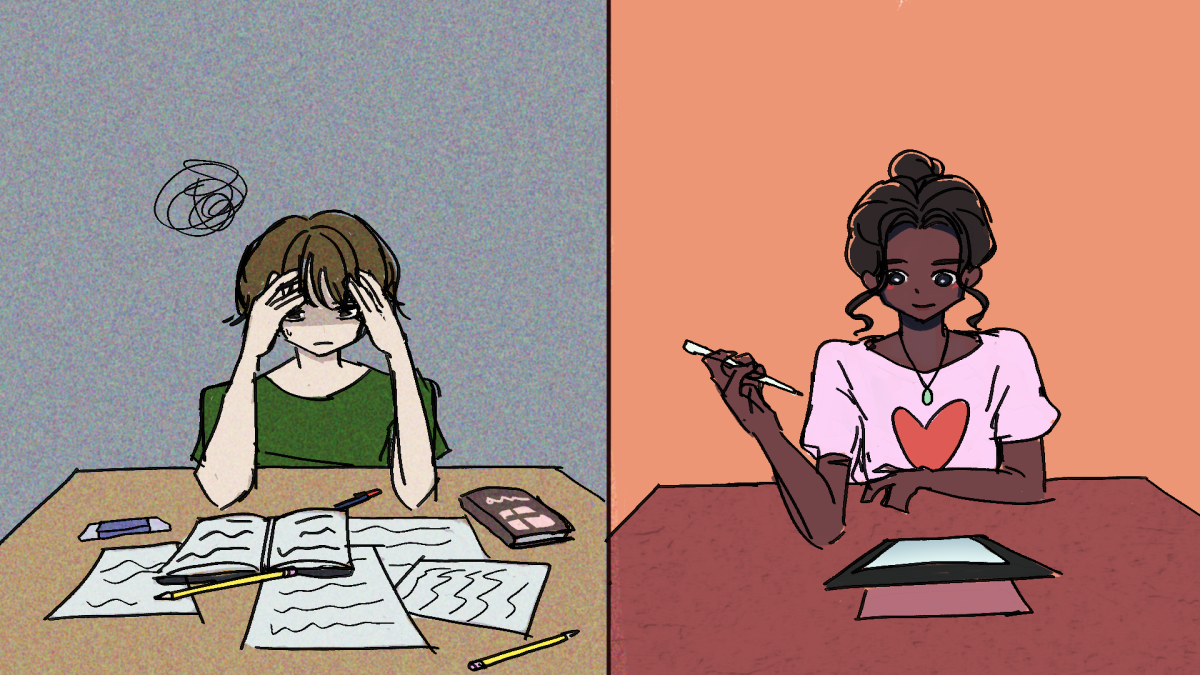The African American Cultural Center resides on the third floor of Witherspoon Student Center. Rich with decades of literature, a majestic portrait with the shining faces of the great African-American leaders and a diverse VHS collection with selections ranging from Prince’s “Purple Rain” to boxed sets of black and Latino activism, it is the ideal place to accompany the new virtual reality (VR) exhibit on campus titled “I Am a Man.”
Sitting comfortably on the floor below the African American Cultural Center is this exhibit made possible by design students. The “I Am a Man” title stems from the slogan of signs carried by African-American strikers during the Memphis, Tennessee, sanitation workers’ strike of 1968, an iconic event in civil rights history that marked an important time of struggle for the rights of African-American city sanitation workers.
Derek Ham, an assistant professor of graphic design, dove into the sanitation workers’ strike and Martin Luther King Jr.’s involvement in it with an innovative, artistic initiative through an interactive VR project that utilizes the latest in interactive VR technology: Oculus Rift. It takes the user back in time and existence into the sanitation workers’ strike on a sunny Memphis day 50 years ago, using the actual interview files from sanitation workers that were at the strike.
The Oculus Rift gives the user a 360-degree view around the buildings and businesses of the city, and allows for many interactive activities such as picking up and reading newspapers reporting on the strike, watching the news on television and even picking up an “I Am a Man” sign and marching with the strikers down the streets.
“It’s a new type of VR experience that’s based upon history,” Ham said. “Based upon civil rights and the Memphis sanitation strike kind of takes you through those key moments leading up to the assassination of Dr. King.”
The project is one of 14 winners of the 2017 Oculus Launch Pad Scholarship, a program meant to discover and showcase diverse VR content creators.
“My project here was just looking at some of the drama that’s instilled in the photography from the civil rights movement,” Ham said. “And looking at these still moments, I think of VR as taking that still frame, animating it in the fourth dimension and then bringing a third dimension to it, so it looks spatial, so it’s really a translating photograph.”
The exhibit boldly displays anti-racism through encompassing textually and aesthetically the powerful quote from Rev. James Lawson, a civil rights activist and orator, “For at the heart of racism is the idea that a man is not a man.”
“I’m looking definitely into doing more projects centered on a historical narrative,” said Ham. “And also historical narratives that are stories about people and things that we may have forgotten.”
Ham’s immersive VR project is the jewel and the crown that holds it is the exhibit design work of seven sophomore student teams of Ham and Townsend’s design course.
The student teams have designed, and remarkably so, different model proposals for the physical design and installation of the actual VR exhibit, which will be installed at the National Civil Rights Museum in Memphis.* The museum will be choosing one fortunate student team’s design work to install along with the VR exhibit.
Katelyn Watkins, a third-year studying graphic design, is a member of one of the student teams who proposed a model for the exhibition.
“My team, team seven, was the turtle in the race,” Watkins said. “We took significantly longer than the other groups did to research and formulate a holistic concept, but once we found our ground, we took off running. Very passionate about telling a story, we decided to propose a space that takes users back in time to the 1960s.”
Watkins’ team executed a design to make it as if the VR project had been made in the 1960s, and wanted to put the project in a historic and empathetic context for users by creating interactive stations in the exhibit leading up to the VR experience.
“At the beginning of the semester, the idea of working on a VR project terrified me,” Watkins said. “But, I could honestly see myself pursuing more opportunities like this in the future. … To tell a story that comes to life, literally, is a designer’s dream.”
According to Shadrick Addy, the TA for the studio course, the students began to work on these projects last semester after fall break, and he is impressed with the work of the professors and students alike.
“I actually learned a lot from them, quite a bit,” Addy said. “I was also impressed because I went to see the students’ presentations for other classes, and they were doing just as much work for these other classes as they were for their studio. For them to be able to balance that time and be able to focus on this project and see it to this success as it did is quite impressive.”
Addy assisted the students at the end of their work through taking the student teams’ physical models and putting them in VR to see and navigate through the model installed in an exhibit.
Ham described his project as being a form of a documentary that could amplify the usual emotions of surprise and enlightenment from documentary with the intimate experience of VR.
On contributing to the National Civil Rights Museum, Ham describes it as feeling surreal.
“I feel like I have big responsibility to bring this to the best level possible,” Ham said.
A trailer of and further information on I Am A Man can be seen at its website, IAmAManVR.com.
*Editors Note: this article has been updated to correct a quote.
The "I Am a Man" exhibit, a virtual reality project created by Derek Ham, recreates the Memphis Sanitation Workers' Strike and other events before Martin Luther King Jr. was assassinated. Ham is an assistant professor in the College of Design. The exhibit is on display in the African American Cultural Center from Jan. 10 to Feb. 6.








